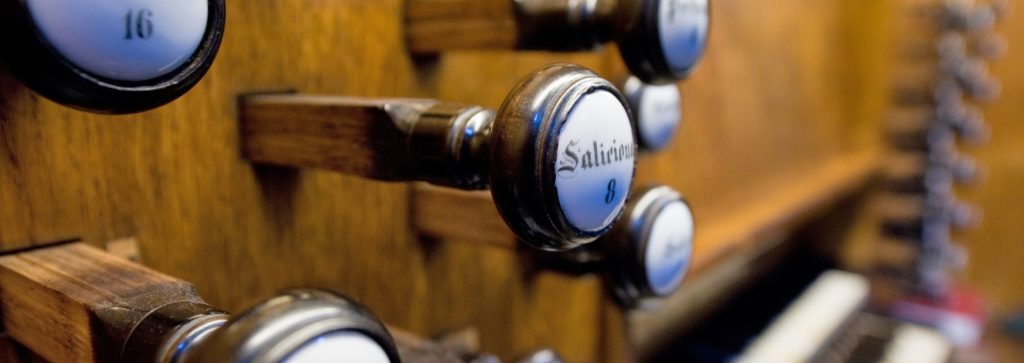Colleges in the United States: A History
“A page of history is worth a volume of logic.“
O.W. Holmes

Since the start of the 21st century, higher education in the US continues to see monumental success and remains a formidable business. As a known stable, skilled sector, it represents about 3% of the gross national product. Every government official across the country declares that colleges and universities are vital to its economic and cultural development.
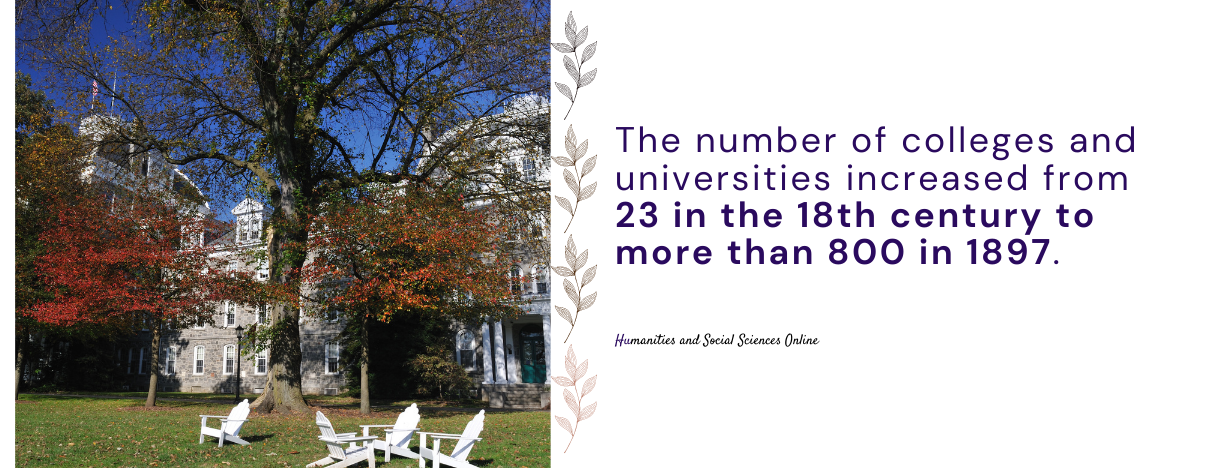
At present, it has about 5,000 accredited institutions that accommodate more than 15 million students and offer over two million degree programs each year. These higher education institutions have spent a considerable amount of money annually on research and development, and a portion of it comes from federal agencies. The research institutions’ power to entice expertise is known worldwide.
Did you know that high academic standards have been characterizing American higher education for more than three centuries? As early as the 17th century, the concept of college started to evolve. Over time, every aspect of education was aimed at offering students diverse and excellent opportunities for academic growth.
In the early years of higher education in the US, governmental regulations regarding English-chartered institutions were vague. Cautious about centralized dominance, Americans kept educational control close to home.
Hence, governance over earlier colleges became nearly the sole administration of local and state governments. In reality, the schools embraced independence as the Supreme Court’s known Dartmouth decision in 1819 exhibited that the new federal government would safeguard colleges from state intervention.
Let us revisit the college system and the ways of life for college students in the early 1900s until significant changes began in the 19th century. We highlight the many facets of higher education where growth and advancements became apparent–shaping college into what it is today!
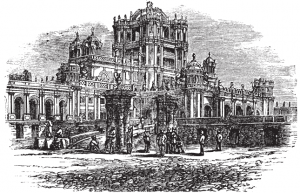
College in the early 1900s
Teaching Style
The leading educators of college in the early 1900s strived to elevate the university standards by implementing extensive academic requisites, which necessitated powerful scholastic standing. However, the first decade of the 20th century is not known for its excellence in higher education. There were less than a hundred American higher education institutions that were reviewed to be educationally formidable.
From the beginning of the 1900s until 1909, most educational reformers wanted better academic institutions all over the US, particularly in the Southern region, where they had terrible standards.
One of the most noted problems that Southern reformers encountered was racial segregation. Access to education for black and white students was different. African Americans had less political power and could not implement political measures to impose equality for their children.
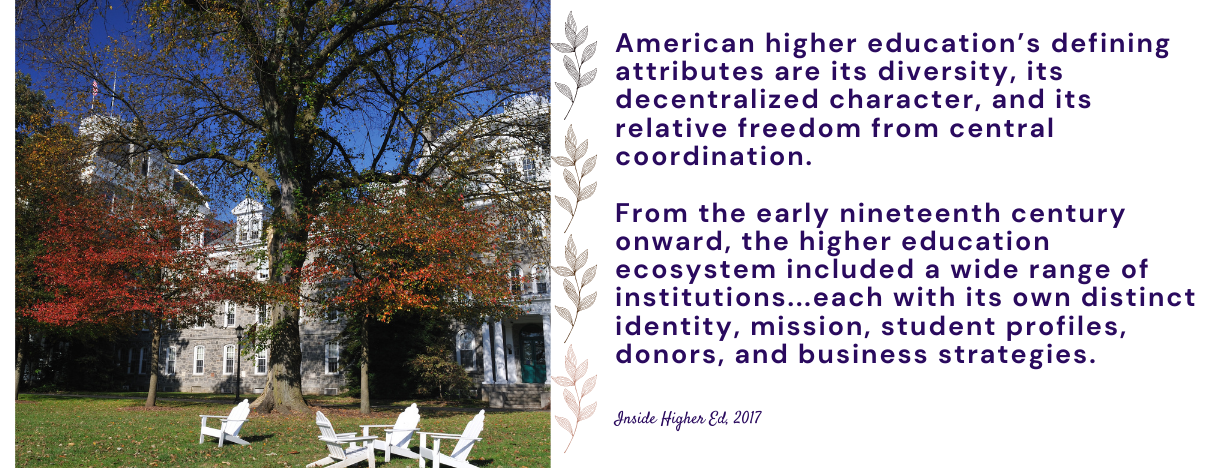
Colleges and universities had implemented a rudimentary pedagogy. It was rehearsing the learners for a year in the fundamentals of physiology, history, morality, and piety. The initial phase of collegiate education was also a form of preparation for educators to adapt to newer techniques such as learning more about their students.
This strategy augmented the teacher-training programs and became the cornerstone for vast institutional expansion in the first part of the 20th century.

Popular Courses
College in the early 1900s was when business-minded people attributed higher education as a crucial element to achieving success in business. Gradually, schools of business emerged at colleges all over the nation. Harvard introduced its Graduate School of Business Administration, following the increase of undergraduate students pursuing business careers.
After the 20th century’s first decade, two-thirds of America’s college students attended disciplines relevant to business professions, such as accounting or engineering.
A few years later, the Works Progress Administration (WPA), a US New Deal agency, formed the biggest education program for adult education. In 1934, instructors schooled more than a million individuals in various subjects from general academic courses to occupational disciplines.
The program has significantly helped people to read and write. Furthermore, it contributed to public schools located in the nation’s poverty-stricken regions by giving health services, furniture-making, and providing supplementary educators. They handled remedial lessons in mathematics and reading.
Other conventional academic classes taught work-related topics like surveying, typing, construction, heavy equipment, auto repair, and driving trucks. These programs developed their vocational skills for jobs not connected to federal work relief initiatives.

Campus Accommodation
Back then, the women’s dormitories were influenced by the designs in the early 20th century, where they screamed domesticity. It was the typical educational philosophy that women were expected to be homemakers and meant to stay in the house more often. Hence, their on-campus accommodations back then had elaborate styles.
The architectural designs presented a charming residence with various lavishly adorned rooms and a massive dining hall located at the first story of the building. This design suggested that women went out of their rooms to socialize.
Eventually, the dormitories evolved as the years passed. Deans and other school administrators emphasized the importance of these on-campus residential arrangements to experience college life fully. The cookie-cutter dormitories had more rooms for students to share and meet along the building’s long corridors. Staying in the dorm served as the transition period from student life to adulthood.
Following the GI Bill, students were keener to live away from the school. Hence, the influx of off-campus high-rise residential halls. Dormitories had more modernist architecture; rooms were built rigidly and repetitively, displaying misery among the students in the building.

Accessibility to Higher Education
Despite dealing with the Depression’s ramifications, higher education continued to create a new curriculum and administrative system later adopted by more recognized universities. These were known as educational experiments, leading to open labor colleges, folk schools, the New School for Social Research, and other small institutions with alternative methods.
In 1903, the Labor colleges were formed in which students and teachers worked to keep the services at the schools. As part of their curriculum, they were taught about labor organization, labor history, economics, industrial workers and farmers, and other labor-related topics. In New York, Brookwood Labor College became one of the first colleges established in 1921, followed by Commonwealth College of Mena in Arkansas in 1925.
More budding colleges provide various academic options so more individuals can gain access to education. Instructions in classes were noticeably creative and progressive, especially for women. Schools like Rollins College in Florida offered a broad scope of instructional freedom of choice.
In contrast, Black Mountain College in North Carolina was more like a folk school and concentrated on building interpersonal relations among the students and teachers. The honors program of Swarthmore College in Pennsylvania received high recognition, which was later mimicked by other universities.

Cost of Attendance
Stanford University was one of the institutions that offered free tuition for its students, which lasted for almost 30 years, from 1891 to 1920. But the perception of higher education since then drastically changed, in which students who went to universities were strangely concerned with gaining social experience instead of learning.
Such a notion sparked change in the purpose of higher education, which was used to be a public good to improve society’s welfare, was turned into a private pursuit of power.
While some students were more bothered with their social life, others searched for ways to finance their education. John D. Rockefeller, a known philanthropist and the wealthiest American started to campaign for students to pay for their school fees. One of his brilliant suggestions was taking out student loans.
Since attending college during this time began to be part of the norms and helped them prepare to land lucrative careers for their future, he urged them that it was time for them to pay for their education.
Through his persistence, school officials, educators, and donors were convinced of his proposal. Hence, student loans became an integral part of the economics of higher education.
In the years that followed, several of the prestigious schools increased their tuition. The cost of attendance for a year in Dartmouth was $1,050, which covered tuition, board, and lodging while $1,200 for Vassar.

Types of Colleges
There were fewer colleges in the early 1900s but eventually increased in the middle of the century. State universities exponentially grew, which welcomed a significant number of students and expanded its network of campuses across the state. Eventually, these regional schools parted and turned as separate institutions.
The previously established city schools became junior colleges at the beginning of the 1920s, which were later called community colleges in the 1960s. Privately-operated schools rapidly expanded too; in 1949, it was considered the peak for private institutions, making a total of more than 300 junior colleges, which started as 20 schools four decades ago.
Furthermore, American research universities flourished after a decade in the 20th century and the arrival of public institutions known as leaders in quality education. For almost three decades, public schools dominated enrollment compared to their private counterparts. Universities broadened their range of operations by offering various highly-specialized divisions. Professional schools, which were considered independent organizations, became part of the universities.

Accreditation
The accreditation for higher education institutions in the US involves a peer-review procedure organized by accreditation commissions and member schools.
The government started to have a minimal role in higher education accreditation with the reauthorization of the G.I. Bill. The original legislation urged the newly established colleges and universities to accept the new students. However, some of these schools were of questionable quality. The ruling in 1952 nominated the existing process as the standard for evaluating the institution’s quality.
The US Secretary of Education is legally obliged to present a list of nationally accepted agencies that the Secretary has found to be trusted authorities on the schools’ quality of education or instructions. This legislation is covered by the terms of the Higher Education Act of 1965, created by the Department of Education.
At present, the schools have continued to go through the accreditation process regularly to maintain the quality of education and integrity and achieve the student community’s trust.

Student Diversity
A good number of women attending college began in the early 20th century. These women went further with their education by enrolling in a female academy, state normal school, or seminary. These were schools that trained individuals to be elementary and secondary educators. Women dominated the enrollment numbers in the California State Normal School.
Despite the formation of colleges for women and minorities, other aspects of demographics such as the student’s race and economic class remained unchanged. The upper society white male dominated the community.

Financial Assistance and Scholarships
The National Youth Administration, which was formed in 1935, was committed to helping college students through the work-study program, which tremendously helped pay for their living expenses and pay for their education. To be able to receive cash assistance, they have to take work-study jobs. But these jobs didn’t just fund their schooling but also taught them more skills.
Despite the Great Depression that drove the rise in tuition rates and the absence of private support, higher education institutions saw a rise in enrollment rates. Alongside offering the work-study program, NYA also funded scholarships worth $600,000 to undergraduate and graduate students. Following the end of the operation of NYA was the birth of the G.I. Bill, an educational funding program for returning soldiers who fought in World War II.
Also, the United Negro College Fund (UNCF) was formed in that year, which financially supported the historically black colleges and universities, especially those black students who belonged to the lower class. Since then, higher education has become accessible to a vast population who were previously neglected.
Over the years, there were more scholarship opportunities offered, like the one given to student-athletes. In the 1950s, the National Collegiate Athletic Association (NCAA) re-engineered its regulations, which allowed the schools to present scholarships as a form of recruiting enticement.

Collegiate Sport
At the beginning of the 20th century, all-girls colleges adopted a passion for collegiate sports. Wellesley College in Massachusetts was one of those who engaged and developed basketball, crew, and physical fitness teams.
As higher education institutions in the Northeast region prospered, they initiated the path to develop the intercollegiate sports that are now being celebrated and observed by all schools. Yale led the football event and was also recognized for its exemplary coaches and their ability to spread Yale football knowledge and sportsmanship throughout the nation. In 1910 Harvard earned the national championship in football and contended itself in various sports events.
College sports were considered as an emblematic litmus test of regional and cultural respect and assimilation. One of the notable events was when the University of Notre Dame earned national visibility by becoming the center of American Catholic pride and affiliation. Its success over other schools gave the American Catholics a sense of achievement and inclusivity.
The trend went consistently and again became apparent when African Americans broke down color barriers through sports, especially in the southern universities. Texas Western’s basketball team with all-black starters won against the University of Kentucky, who had an all-white starting five, marking a crucial turn in recruiting and recognizing black players.

Social Life
College life in the 1900s became more elaborate and slowly adapted to independence. Attending school, regardless of your color or gender, was normal. Campus life was fun and exciting since fraternities and sororities were around to support their younger brother and sisters in their first few years in college.
Social life was much livelier as there were several available recreations around the schools. Although some students may still have curfews, they made sure to have fun before heading home. Going to clubs, cinemas, and house parties was prevalent in the mid-20th century.
As the year progressed, students could appreciate their independence since they could attend a series of unsupervised recreation with friends. The wealthy ones brought cars and went for long rides to the next town or the beach on weekends. And dating was much fun since the couple went out in groups. College life in the 90s was the final phase of having fun before entering adulthood.

Higher Education in the 19th Century
Teaching Styles
Higher education in the 19th century was when there was a scarcity of educators in schools with advanced credentials like Master of Science, Master of Arts, or Doctor of Philosophy. There were only a few academic schools in the US that awarded these degrees.
It was the era of establishing colleges by different religious groups to train men for the ministry. Hence, the instructors at this time were mostly clergymen. Besides being in the ministry, other professions requiring an academic degree were lawyers and medical doctors.
The early colleges had only a number of the undergraduate curriculum, focusing on religious studies and liberal arts. The majority of the students were men from affluent families who were given education on ancient topics like history, Greek, Latin, geometry, logic, and music. Unfortunately, courses like astronomy, zoology, biology, chemistry, and natural sciences were offered.
In the final quarter of the 1800s, the normal school in America included laboratory science and natural history in the curriculum. Eventually, they offered physiology, botany, geography, and nature study courses as they were about to enter the 20th century.

Popular Courses
The 1800s was the time of budding universities, gradually offering limited degrees like law and medical programs. It enticed politically ambitious men from the Southwest region who aspired to be governors, congressmen, senators, and ambassadors someday.
Most higher education institutions were funded by religious groups and churches with pastors who acted as their teachers. Following the Morrill Land-Grant Acts, the first public historically black colleges and universities were established together with other schools in the Midwest.
In 1868, Cornell University pioneered in dividing the colleges that offered various degrees. When Johns Hopkins University began in 1876, the administrative divisions were under two undergraduate and graduate schools. As other schools started to open more courses for master’s and doctor’s degrees like Bryn Mawr College in Pennsylvania, Johns Hopkins University chose to concentrate more on their research department.
The trend went in the 1890s, so Yale, Harvard, and the rest of the private institutions followed suit. These milestones came from the influence of the scholarly achievements of German universities.

Accessibility to Higher Education
One would wonder what was college like in the 1800s, where access to education was more of a privilege than a norm. It wasn’t until Thomas Jefferson’s vision came to life that academic opportunities increased, and the student community became diverse. In the 1860s, there were more universities built due to the passage of the bill Land-Grant Acts. It allowed the formation of land-grant universities through the profit from federal land sales.
The number of colleges and universities increased from just 23 in the 18th century to more than 800 in 1897. These were considered secular properties established on a practical mandate to support science, technology, and agriculture.
The increase in the number of schools came with the improvement of education’s accessibility to women. They had numerous options that relied on which region they were in; the northern area focused on specialized training for teachers; the southern part was more on the liberal refinement for aspiring gentry wives. The Western region, meanwhile, focused heavily on general-purpose education.
The overwhelming increase in new institutions was because of the denominational outreach to thriving communities that considered school a hallmark for culture and growth. The regular college at that time, due to the remote local support and insufficient means, was about preparatory education via its classical and commercial disciplines. The emergence of multi-purpose colleges brought crucial transformation from traditional to segmented specialized institutions.

Types of Colleges
Higher education in the 1800s was the century of booming private institutions, from having 49 institutions in the 1920s and rising to 240 more schools. And only 10% of that number was for public schools. By the time it was the end of the century, a whopping 821 higher education institutions had been built, which was considered one of the momentous achievements in the education industry.
Such success was attributed to the Morrill Act, which granted financial assistance to the state to fund colleges and universities that offered mechanical arts and agriculture programs. It also was the catalyst for the creation of more historically-black universities. Ultimately, there were more private institutions founded during that time as compared to the public ones.
Nevertheless, the number of students who attended publicly-controlled institutions was considerably higher than those in private. In 1897, there were more than 400 students in public, while only half of that number went to private schools. This trend was steady until it reached the first quarter of the 20th century.

Accreditation
The accreditation of U.S. higher education institutions played a significant role during the evolution of the education system, especially when it came to the point that there was no centralized board to set the academic standards. There was no unanimity on the content of the secondary and post-secondary institutions’ educational programs, entering the final years of the 19th century.
Since there were no specifics, the pioneer association of post-secondary schools was created in 1895, highlighting the distinction between high school and college. It also established guidelines and peer review procedures as a stipulation for membership.
Eventually, several regional associations were established whose membership was dependent on accreditation. These associations formed distinct accrediting commissions that were behind implementing the standards and assessing the institutional qualifications for membership. By the time it reached the 20th century, degree-granting schools were either applicants or received accreditation.

Campus Accommodation
Dormitories already existed as one of the student accommodations during college in the 1800s. Living in the dorm was more of complying with students’ moral obligations and gaining pedagogical benefits of college life. Hence, some students who can’t stand it thought of staying somewhere else.
They improvised and created their communal areas translated on the first fraternity house–the Zeta Psi house. Located at the University of California, Berkeley, the house was a simple structure funded by alumni back in the 1870s.
When fraternities increased their numbers, the alumni wanted their younger brothers to stay in a house that screamed wealth and superiority. Thus, the surge of fraternity mansions. The Psi Upsilon House at the University of Michigan was a concrete example of this architectural elegance. This type of accommodation embodied the fraternities’ reputation as expensive and exclusive.
Initially, dormitories were segregated. Men who didn’t belong to the white Protestant elite were asked to stay in separate housing. The Harvard Indian College was known as the white students’ residents, while the native learners had different accommodations.
This arrangement went on even when white women of middle and high classes started to attend post-secondary education. They lived in cottages instead of boarding houses to reflect domesticity since women back then were expected to be homemakers, mothers, and wives.

Cost of Attendance
At present, the cost of attendance, the rates, and expenses are insanely high compared to the fees students of the 19th century have paid for. Looking at their condition, one will ponder on the thought of what was like college in the 1800s when accommodations and living expenses cost only a couple of hundred.
In the early 1800s, colleges had meager tuition rates, and others didn’t charge at all. However, only those who came from well-to-do families had the means to pay for college’s living expenses.
Like today, parents of 19th-century students have to pay for their board, lodging, food, supplies, clothing, and other essentials. The majority of households were not financially capable of shouldering all these, especially if there was only one working adult in the family.
As it progressed, students who stayed in dormitories had to learn to live a simple life compared to their opulent lifestyle. Through this simple lifestyle, tuition and daily expenses were fairly low. Tuition rates of prestigious schools such as Brown University would only cost about $75 a year while Harvard can go at $150. Even with these costs, those in the lower class could still not get to college without scholarship support.

Financial Assistance and Scholarships
Higher education in the 19th century didn’t have as much support as they do now. Financial aid to the institutions was primarily a philanthropic pursuit from deep-pocketed individuals committed to helping students’ needs. Although scholarships existent, a well-organized financial assistance program and a system to assess student excellence have yet to occur.
With that said, it’s the student’s financial record that became the main criteria to qualify for financial support. Harvard had the first reliable system of financial assistance that immediately developed across the nation’s schools and ultimately into the federal government.
One of Harvard’s efficient financial assistance programs was the private student lending agency, Harvard Loan Program, which offered zero-interest loans to those who had no means to pay for education. Wealthy alumni and benefactors funded this initiative.
Those undergraduates looking for assistance via the loan program had to appeal to the university president on their first day of school. They had to declare their other financial support if they already had one and identify other forms of help they expect from the institution.

Student Diversity
Unlike today’s colleges and universities that uphold student diversity, higher education institutions in the past had more men than women as students. Women were able to attend college only during the second half of the 19th century. After the US women’s rights movement, colleges and universities opened co-education, which was, at the same time, restricted with paternalistic rules.
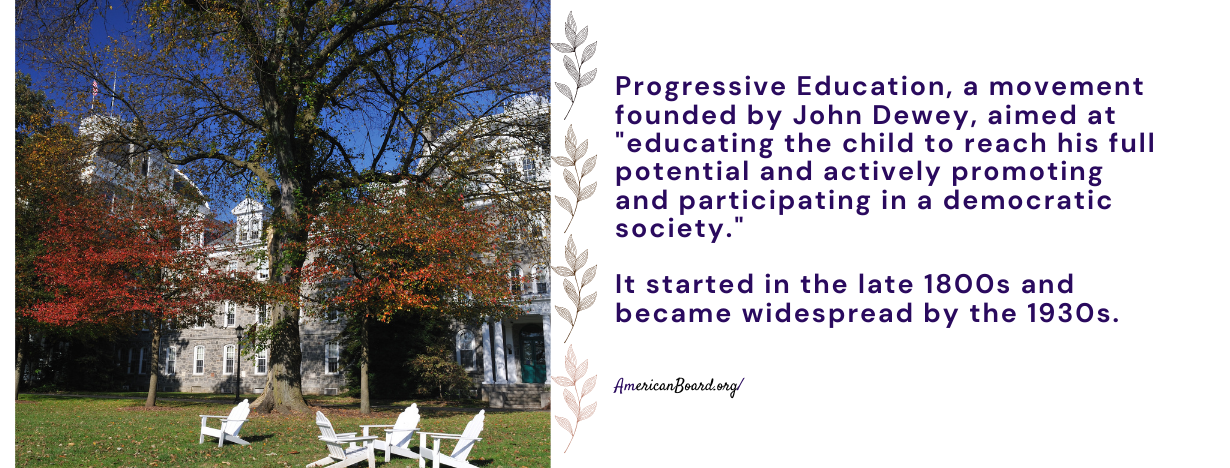
From the later part of the 18th up to the beginning of the 19th century, Native American students, particularly women, were housed in colonists’ houses and taught about housekeeping and other domestic chores. On the other hand, male students stayed at school to learn writing, reading, arithmetic, and foreign languages. For several years, there were very few American Indian students receiving education back then.
In 1833, Oberlin College of Ohio offered admissions to black and white, male and female students. Following the Civil War, over a hundred African American men and women attended Oberlin, and about 30% of that population could graduate. African American students only had a very minimal chance of entering college since there were only very few of them who were offered admission. Sadly, there was even a law in Ohio prohibiting public funds to finance the education of African Americans.
Even with HBCUs’ rise after the Civil War, federal funding didn’t roll out equitably to the said schools. The Second Morrill banned racial discrimination in the dispensation of funds. There were colleges and universities created exclusively for African American students, which usually carried agricultural missions.
Despite their distinction, equality wasn’t observed that much when it came to their schools. Funding was consistently low for HBCUs as compared to higher education institutions, mainly for white students.

Collegiate Sports
Throughout the nation, colleges and universities became the cradle of sports activities, particularly football. Rowing was the first college sport in the 19th century. Despite colleges forming basketball, baseball, tennis, and track and field tournaments, football gave a firm foundation for college sports that went on for centuries.
Football came from English rugby to the sport of the prestigious schools. Yale University was behind the refinement of football and the promotion of the game in the American tradition.
Sports in college unfolded from ordinary intramural activities to becoming a major division handled by the faculty later in the century. The athletes were from the upper class, who were the only ones who could pay for university education.
Since the school went all in, they employed professional coaches and recruited talented but academically challenged players to pursue victory. College sports were under fire due to these scenarios, which were strongly refuted by the educators.
Also, college sports were known for their violent student traditions. Even with the intramural sports, school officials tried to curb the brutality in the activities but failed. Hence, they hired referees to oversee the events and practice sportsmanship among the teams.
Teams of respective schools join the competition and continue to influence other organizations to join the tournament. Despite all of the burgeoning participation of organizations, administrators were not keen to accept these competitions considered an improper diversion from serious academic work.

Social Life
Apart from reciting textbooks and studying, college social life in the 1800s was more involved in literary societies. Before the birth of sororities and fraternities, they joined clubs and academic organizations to eliminate homesickness. First-year students were encouraged to be involved with extracurricular activities to adapt to college life gradually.
After being out and about with their friends, students have to be back before midnight because they stay in dormitories or boarding houses with curfews. Besides these pursuits, students explored the forests and caves, watching horse racing and hunting during their free time.
Courtship was the term for dating back then. Men and women were very conservative and so were prohibited from sitting together in lectures. Students consider the campus a place for their chatting, reading, and flirting under the trees or ball field, before and after classes.

Throughout the years, higher education in the United States not only weathered the changes; it embraced them! And so the question begs: will today’s unpredictable college environment spark remarkable changes in the many facets of the higher education system?

